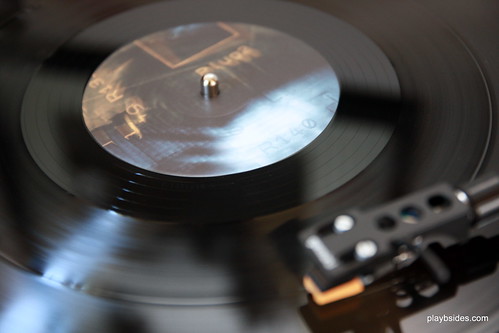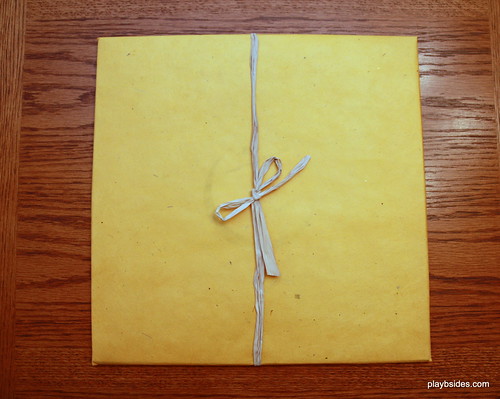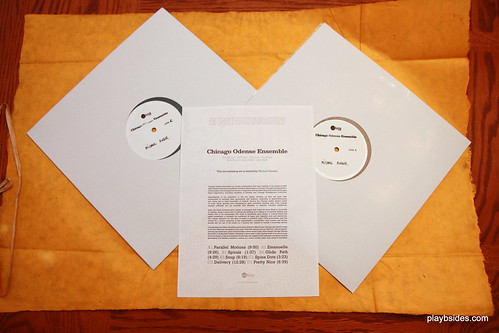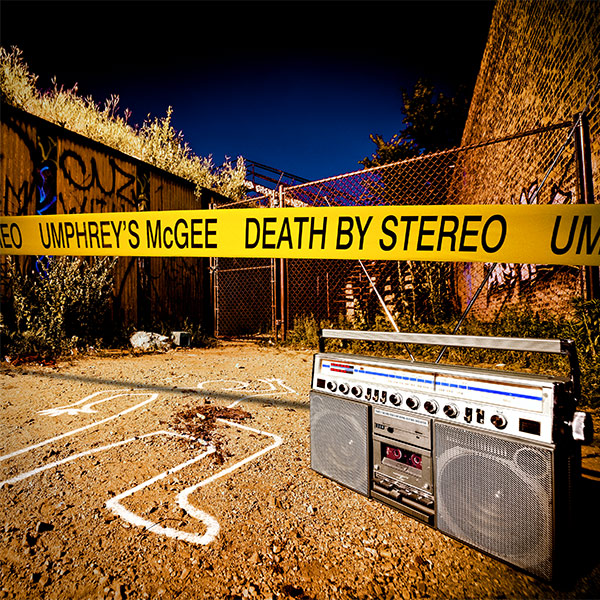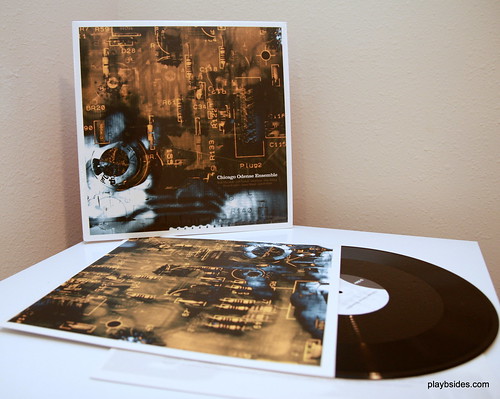
In the last year or so it seems that a few groups that I follow have chosen as a template for their recent albums the genre-defining and game-changing 1969 Miles Davis album In A Silent Way. In the Davis oeuvre, In A Silent Way represents his first full-step into electric fusion jazz and the precursor to Bitches Brew. The album itself is two compositions– on the LP, one per side– which are made up of edits of a much longer recording session by legendary recording engineer Teo Macero.
In 2008 musicians gathered in Chicago to collaborate on a new work. The group consisted of Rob Mazurek of Isotope 217 and Chicago Underground, Jeff Parker of Tortoise and Isotope 217, Dan Bitney of Tortoise and Isotope 217, Matt Lux of Isotope 217, Brian Keigher, Jonas Munk of Causa Sui and Manual and Jakob Skott of Causa Sui. A joining of bands from Chicago and Odense, Denmark named Chicago Odense Ensemble.
In Spring of 2010, I started hearing about this album from the folks at the boutique French record label AdLuna. AdLuna makes very-small-run releases with gorgeous packaging– all labors of love. The label had releases by Thrill Jockey alumni, including Rob Mazurek’s solo work Abstractions on Robert d’Abrissel, and Jeff Parker (on Doug Scharin’s Activities of Dust project) and now Chicago Odense Ensemble. The ambitions of the label for the release matched the promise of the recording. This album was going to represent AdLuna’s first venture into vinyl– a media befitting the importance of the album, and would give them the ability to stretch their packaging chops with the larger canvas.
An undertaking of a project this size was going to be a stress on the small label, so they reached out to the fans with a pre-order campaign in June. By November, the packaging and other details of the release were ready and they were only going to press 250 180g LPs and 500 CD’s making this a very limited release and very desirable for collectors. Today, out-of-print Thrill Jockey titles can fetch around $40, and those are usually limited to 1000 LPs per pressing. I can only imagine the future value of this release!
In April 2011, the album was finally completed and ready to ship the pre-orders. The folks at AdLuna felt especially generous and decided to give away six sets of the test pressings to some lucky fans who pre-ordered the release. These six sets required some special packaging and shipping materials, so the winners had their releases shipped a bit later. As it turned out, I was one of the lucky six! The package included the LPs as expected and also included the test pressings which were wrapped in very special paper and were personalized with a letter of ownership as well as each of the records having the owner’s name written on them. As I write this, I’m still astonished by the effort and personal touch put forth for this!
The test-pressings were wrapped in a special Himalayan paper called lokta paper made from the bark of the lokta bush or Daphne bush. The included letter says this:
The lokta paper has been made in the Himalayan region for over 1200 years. Handcrafted, the paper is made from the inner bark of the bush which grows at a high altitude of 6500 to 9500 feet. It is very strong and is an incredible eco-friendly choice. The Nepalese claim that the lokta paper lasts for 1,000 years if protected from sunlight.
The Chicago Odense Ensemble album is the result of a coming-together of two camps of musicians from seemingly different genres. The album is more about the exploration of groove and improvisation than it is about strict composition. In fact, this album is partially inspired by the aforementioned work done by Miles Davis, if not the resulting proto jazz fusion that followed. In a similar way to the Davis albums Chicago Odense Ensemble was created by marathon recording sessions followed by Monk taking the recordings back to his studio and editing and massaging the recordings into the resulting tracks.
Taken in whole, Chicago Odense Ensemble is an impressively cohesive work, no doubt supported by the very fruitful original sessions recorded in 2008. Considering the improvisational nature of the original tracks, the editing brings these tracks into individual compositions with unique moods and movement.
Here are my listening notes for each of the songs:
1. Parallel Motions (9:50) – dual improv of cornet and guitar over repeating and building bass, guitar and percussion.
2. Emanuelle (9:23) – almost a dub track with the rolling echo. In the last two minutes of the song it switches to a more organized finish with brushes on the eights and chiming clean guitar chords underneath a trumpet melody.
3. Spirals (1:36) – Melancholy little interlude. Arpeggio clean guitar and coronet with a bell mute.
4. Glide Path (4:30) Bongos and atmospheric guitars. Lots of Isotope 217 and Tortoise influence on this track. Pretty, if a bit incidental
5. Soup (6:19) First song previewed from album. Starts with a marching snare and circular guitars builds in a circular fashion adding in frenetic cornet runs and guitar to the end.
6. Spine Dots (3:20) Ominous and unstructured, atmospheric and swelling fragments of instruments a lead-in to “Delivery.”
7. Delivery (11:59) African rhythms – shakers and guitar and bass playing same notes. halfway though the rhythm becomes more loose/more jammy. Becomes more frenzied in last two minutes and cacophonous
8. Pretty Nice (6:35) Appropriately described by the song title which is in-turn inspired by the studio chatter included at the end. Nice bright track. mellow percussion. nice way to wrap up the album.
At the time of this writing there are less than 100 of the LPs remaining. Visit the Chicago Odense Ensemble website for ordering information. You can order the CD here as well. For any order, they have immediate digital download, too.

